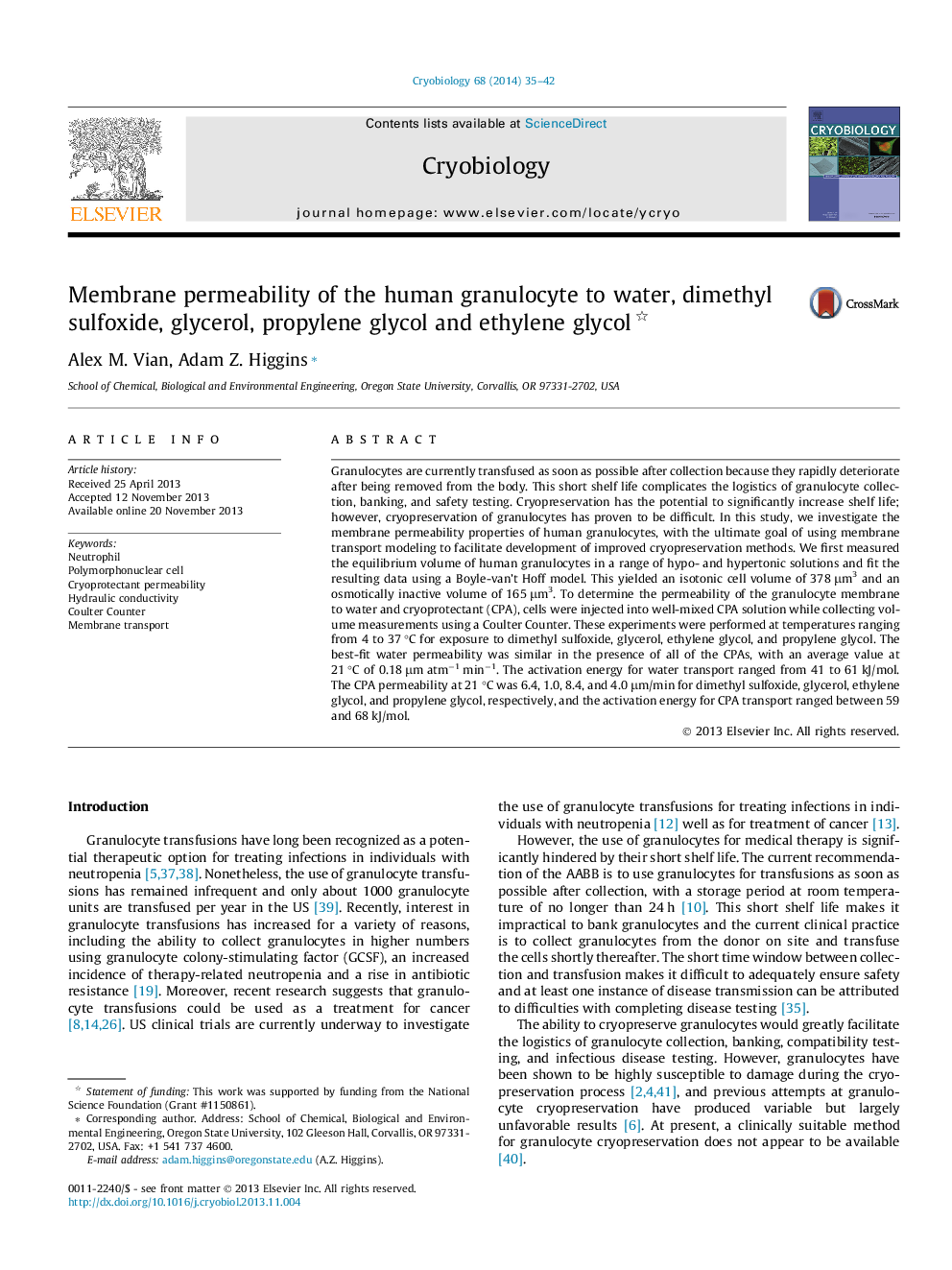| کد مقاله | کد نشریه | سال انتشار | مقاله انگلیسی | نسخه تمام متن |
|---|---|---|---|---|
| 10928022 | 1092890 | 2014 | 8 صفحه PDF | دانلود رایگان |
عنوان انگلیسی مقاله ISI
Membrane permeability of the human granulocyte to water, dimethyl sulfoxide, glycerol, propylene glycol and ethylene glycol
ترجمه فارسی عنوان
نفوذپذیری غشاء گرانولوسیت انسان به آب، دی متیل سولفوکسید، گلیسرول، پروپیلن گلیکول و اتیلن گلیکول
دانلود مقاله + سفارش ترجمه
دانلود مقاله ISI انگلیسی
رایگان برای ایرانیان
کلمات کلیدی
موضوعات مرتبط
علوم زیستی و بیوفناوری
علوم کشاورزی و بیولوژیک
علوم کشاورزی و بیولوژیک (عمومی)
چکیده انگلیسی
Granulocytes are currently transfused as soon as possible after collection because they rapidly deteriorate after being removed from the body. This short shelf life complicates the logistics of granulocyte collection, banking, and safety testing. Cryopreservation has the potential to significantly increase shelf life; however, cryopreservation of granulocytes has proven to be difficult. In this study, we investigate the membrane permeability properties of human granulocytes, with the ultimate goal of using membrane transport modeling to facilitate development of improved cryopreservation methods. We first measured the equilibrium volume of human granulocytes in a range of hypo- and hypertonic solutions and fit the resulting data using a Boyle-van't Hoff model. This yielded an isotonic cell volume of 378 μm3 and an osmotically inactive volume of 165 μm3. To determine the permeability of the granulocyte membrane to water and cryoprotectant (CPA), cells were injected into well-mixed CPA solution while collecting volume measurements using a Coulter Counter. These experiments were performed at temperatures ranging from 4 to 37 °C for exposure to dimethyl sulfoxide, glycerol, ethylene glycol, and propylene glycol. The best-fit water permeability was similar in the presence of all of the CPAs, with an average value at 21 °C of 0.18 μm atmâ1 minâ1. The activation energy for water transport ranged from 41 to 61 kJ/mol. The CPA permeability at 21 °C was 6.4, 1.0, 8.4, and 4.0 μm/min for dimethyl sulfoxide, glycerol, ethylene glycol, and propylene glycol, respectively, and the activation energy for CPA transport ranged between 59 and 68 kJ/mol.
ناشر
Database: Elsevier - ScienceDirect (ساینس دایرکت)
Journal: Cryobiology - Volume 68, Issue 1, February 2014, Pages 35-42
Journal: Cryobiology - Volume 68, Issue 1, February 2014, Pages 35-42
نویسندگان
Alex M. Vian, Adam Z. Higgins,
